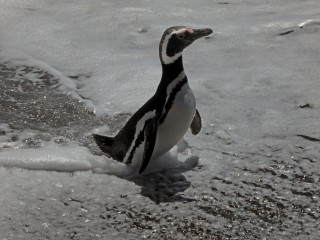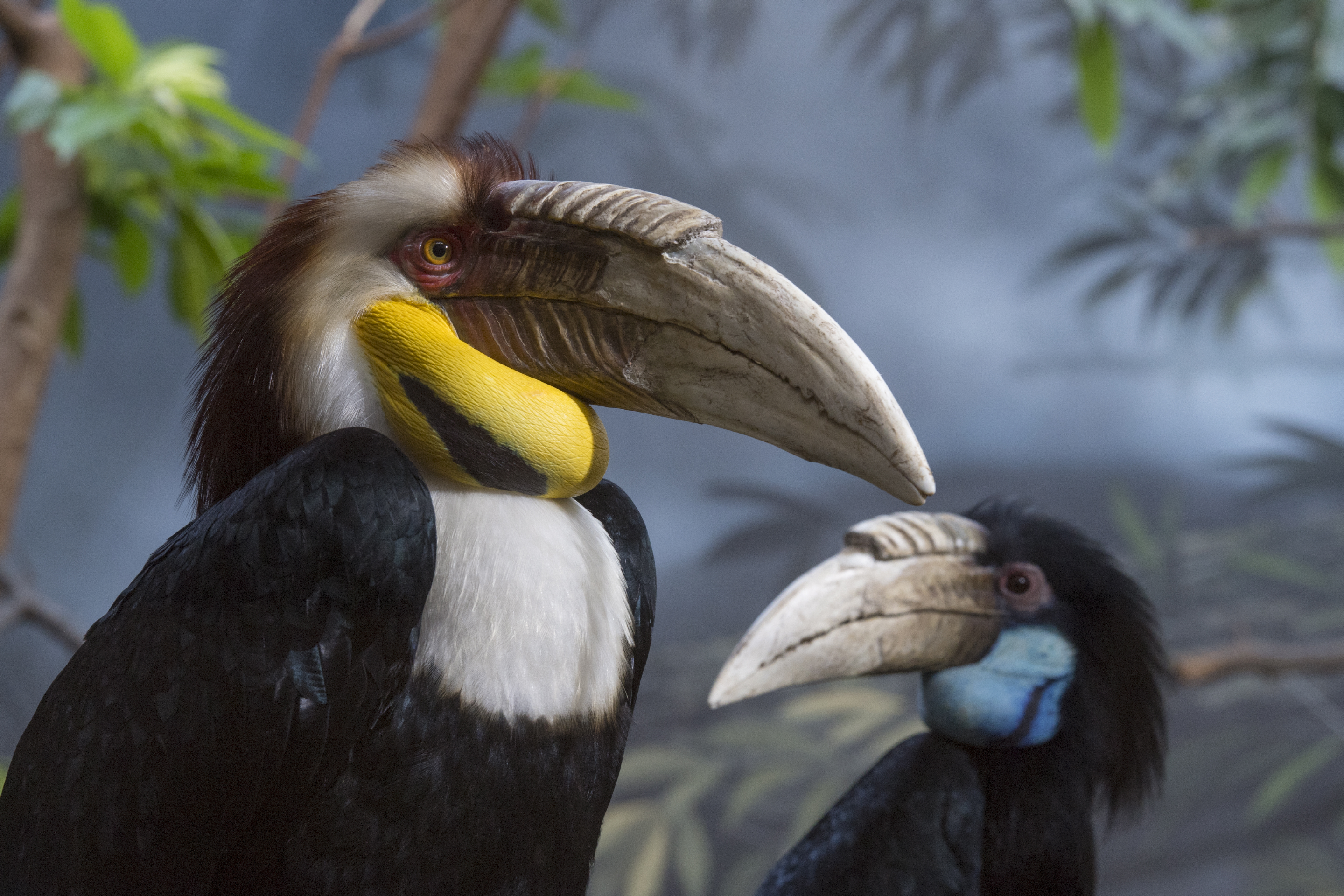
March 1, 2017
Mates for Life
- as seen by -
 Sarah Grace Parker
Sarah Grace Parker
Hornbills are named for the helmet-like structure at the base of their beak called a casque, the purpose of which is still speculated upon. Unlike many hornbill species that sport a more colorful protrusion, the casque of wreathed hornbills (Rhyticeros undulates) is much more subdued, taking the form of a succession of ridges or wreaths. This has earned them the Javanese name “anggang tahon,” which translates to “year bird,” for the false supposition that a new ring appears each year like the rings of a tree. In actuality, more than one ridge may appear in a single year, and old ridges often fall off. Even though only up to nine ridges may be present at any time, wreathed hornbills can live over 40 years.
Despite their flattened casque, these spectacular birds are no less flashy than their cousins. The sexes are easily distinguished by their brightly-colored gular pouches – yellow for males and blue for females – which can be used to store food. Their long and powerful beak helps them to reach food that would otherwise be inaccessible. Their eyes and the encircling bare skin are a vibrant red, adding to the overall brilliance of their appearance.
The Wildlife Conservation Society’s Prospect Park Zoo welcomes our pair of wreathed hornbills to their new exhibit. Wreathed hornbills mate for life, and our male dotes upon his mate offering her figs and grapes to strengthen their bond. After breeding, he will help seal her into the nest cavity leaving only a small opening through which he will feed her and their future offspring. After several months, the female will emerge with a single chick.
While wreathed hornbill populations are currently stable in the rainforests of southeast Asia, they are threatened by the continual encroachment of man and the deforestation of their habitat. WCS is helping to fight for the survival of hornbills and all of the animals that share their habitat.
Nikon D5, Nikon AF-S Nikkor 200-500mm f/5.6 Lens




Leave a Comment
Beatriz
February 27, 2021 at 10:38 am
I was looking at a friend’s Facebook profile and saw a post mentioning that Hornbills mate for life. I had no idea what a Hornbill was and here l am! I learned so much! Thank you for all the information!!!!